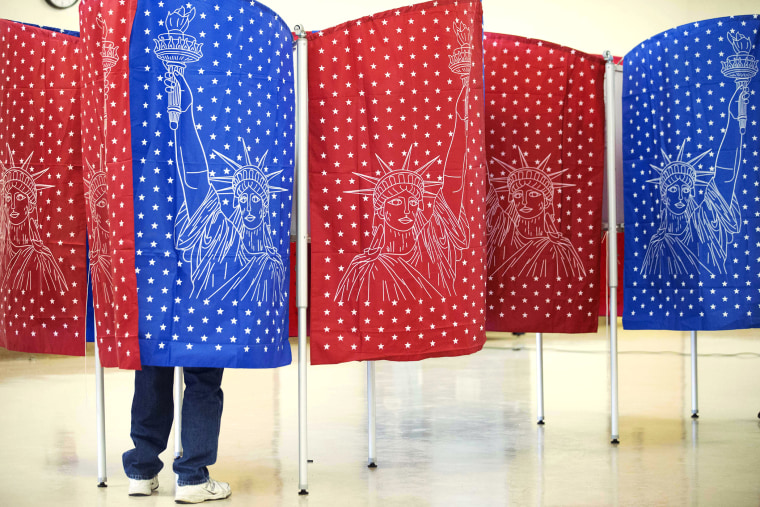When congressional elections are still a year away, pollsters can't ask the public whether they intend to vote for one candidate vs another, since it's not yet clear which candidates will be running. As a result, pollsters use something called the "generic congressional ballot" to gauge voters' attitudes: respondents are asked whether they intend to support unnamed Democratic or Republican candidates.
It's not precise -- voters have to choose between real people, not generic partisans -- but this tends to be a reliable indicator of which way the political winds are blowing.
And as the New York Times explained yesterday, the prevailing winds are at Democrats' backs.
Democrats now lead by over 13 points, according to the FiveThirtyEight generic ballot tracker, after a CNN/SSRS poll on Wednesday gave Democrats a staggering 18-point edge, 56 percent to 38 percent.A 13-point edge would be similar to or larger than their advantage in 2006, when Democrats won control of both the House and the Senate.
CNN's report on its latest poll said the Democrats' current lead is "the largest at this point in midterm election cycles dating back two decades."
What's more, this isn't the only evidence. Several major pollsters -- NBC News/Wall Street Journal, Marist, Quinnipiac, Monmouth, and others -- have all shown Democrats with a double-digit advantage. One survey can be dismissed as a possible outlier, but when every survey points in similar directions, it's compelling evidence.
What's more, while Dems have fared well in generic-ballot polling all year, the party's advantage has recently gotten bigger, not smaller.
And this is the point in the conversation in which Republicans and their allies remind everyone that it's December 2017, not November 2018. Democrats may be in good shape now, the argument goes, but a lot can and will happen between now the midterm elections.
It's a fair point, to be sure. In a volatile political environment, it's probably best not to make sweeping assumptions this far out from Election Day.
That said, for the right to dismiss the generic-ballot data is a mistake borne of wishful thinking. The New York Times' report added that "among the various measures of American public opinion, the generic ballot is about as stable as it gets."
As FiveThirtyEight's Harry Enten wrote months ago, even the very earliest generic ballot polls tend to correlate with the final generic ballot polls. There's a tendency for the polls to drift toward the party out of power -- and that's exactly what has happened over the last few months.At this later stage, the generic ballot is even more stable than it was when he wrote about it in April. Since 1970, there has been surprisingly little movement between generic ballot polls taken between 221 and 421 days ahead of the midterms -- we're at 321 today -- and those taken over the final 30 days. The average shift is just 2.4 points.
Enten added on Twitter yesterday that he's "studied the generic ballot more than perhaps any other ballot measure," and the latest data is "very, very, very bad news" for the Republican Party. (Enten also noted last night that he said the same thing eight years ago ahead of the 2010 wave that benefited the GOP.)
In practical terms, what happens if the generic ballot is correct? Can gerrymandering protect Republicans from voters? Almost certainly not. Polling experts have offered competing assessments, but the general consensus seems to be that Democrats will take back the U.S. House, at a minimum, with an advantage of +9 or greater.
And right now, the average is +13.
